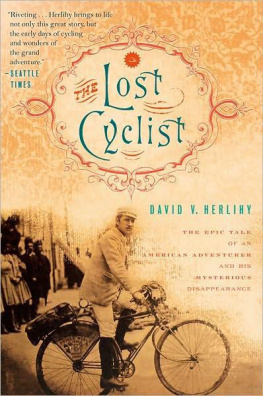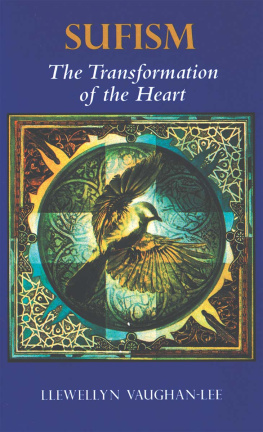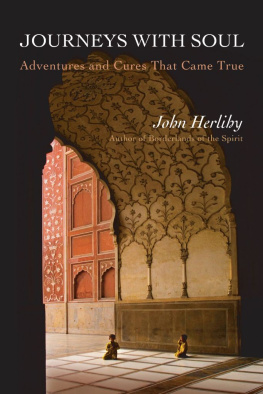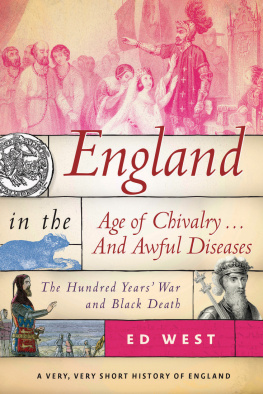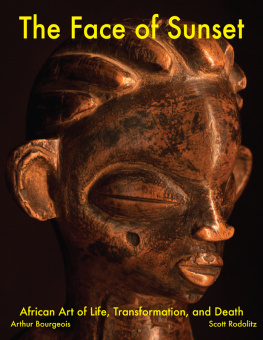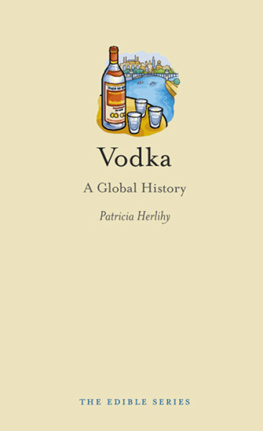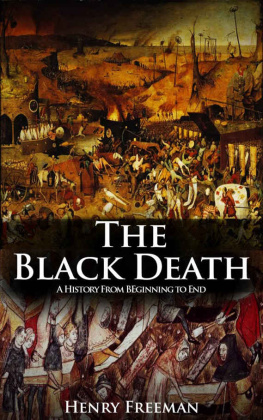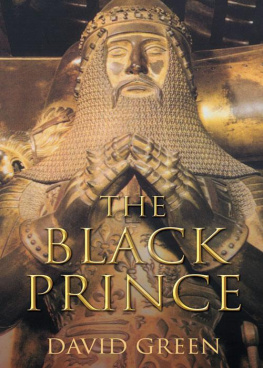Copyright 1997 by the President and Fellows of Harvard College
All rights reserved
Printed in the United States of America
Library of Congress Cataloging-in-Publication Data
Herlihy, David.
The black death and the transformation of the west / David Herlihy; edited and with an introduction by Samuel K. Cohn, Jr.
p. cm.
Includes bibliographical references and index.
ISBN 0-674-07612-5 (cloth: alk. paper).
ISBN 0-674-07613-3 (paper : alk. paper)
1. Black deathEurope. 2. Diseases and history.
3. Civilization, Medieval. 4. RenaissanceEurope.
I. Cohn, Samuel Kline. II. Title.
RC178.A1H47 1997
940.1'92dc21 96-54637
Designed by Gwen Nefsky Frankfeldt

David Herlihy crossed a chronologically critical divide after completing his book on medieval Pisa In the early 1960s he embarked on an investigation of the social and economic history of late medieval and Renaissance Europe, taking the Black Death of 1348 and its aftermath as the center of his analysis. This new focus characterized the bulk of his historical forays for the rest of his life. No matter what the subjectthe history of popular piety, the networks of political elites, the family, women, or technologythe Black Death of 1348 and its consequences were central to his interpretative frameworks. Hence we were fortunate to find in Herlihys stacks of research notes, computer files, and essays three unpublished lectures delivered at the University of Maine in 1985. With characteristic lucidity and boldness, these essays establish more clearly than anywhere else in his writing Herlihys belief in the critical importance of the Black Death for the development of Western Europe and the transition from medieval to modern systems of behavior.
The three essays are not simply recapitulations of previously stated positions or revisions of previous research. Instead, they show an engagement with new sources for interpreting the Black
The essays also, of course, follow the main lines of his thinking. Already in his first work on late medieval and Renaissance Italy he characterized the Black Death of 1348 as the great watershed in medieval demographic and economic history.
Nonetheless, in sharp contrast to the three texts of 1985, Herlihys diagnosis of the plague circa 1965 was still enmeshed in the broad Malthusian framework set by historians of the early 1960s. In the early 1970s, moreover, the importance of Malthusian cycles had become more pronounced in his work. In a spectral analysis of burial and death records, Herlihy and his statistician colleagues drew a symbiotic relationship between cycles of fertility and mortality in which the peaks in mortality were driven by fertility:
The cycle of death rates, we propose, is closely related to, and in some sense may be considered in delayed reciprocal movement with, the cycle of birth rates. The high mortalities of a major plague stimulated the formation of a large age cohort, relative to the older population, in the following years, and this cohort was also likely to prepare another plague outbreak some forty or more years later, when it was most actively reproducing.
True, Herlihy had eloquently demonstrated the shortcomings of a Malthusian model that stressed only the positive checks By such a reckoning the plague should have struck much earlierin Pistoia, even before the recurrence of famines in the early fourteenth century and possibly as early as the mid-thirteenth century. Moreover, a crude Malthusian model was inadequate for explaining the delay of European populations to recover their losses during the fifteenth century. Yet in Herlihys work on Pistoia it was the social, political, and economic conditionsoverpopulation, over-extended planting of wheat, burdensome taxes in the countryside heaped on those least able to pay, and poor living standards for the mass of the populationthat formed the crucible from which pestilence, even if delayed, would emerge by the mid-fourteenth century to change the ecology of Europe.
In both his article of 1965 and his book on Pistoia Herlihy concluded his discussion of the plague by turning to the account of the contemporary chronicler of Florence, Giovanni Villani, himself struck down by the pestilence of 1348. In his last days Villani had asked whether the disasters of his day should be attributed to factors beyond human responsibilityblind chance or the forces set in motion by celestial conjunctionsor whether they were to be interpreted as divine retribution for the present-day sins of the Florentinesavarice, greed and usurious oppression of the poor.
By 1985 Herlihy had changed his mind. Had he chosen to return to Villanis interpretive dilemma, he would have picked the first of the Florentine chroniclers explanations. For Herlihys analysis, the plague now had little if anything to do with social forces. He had moved away from his modified Malthusian frame-work
Why had Herlihy changed his mind? Part of the explanation might be traced to a conference of 1983, during which the Italian demographer Massimo Livi-Bacci, among others, had argued vigorously against any causal link between malnutrition and plague or, for that matter, between malnutrition and many other epidemic diseases. Indeed, it would appear that malnutrition often served as a prophylactic against disease.
But what was even more crucial to Herlihys change of mind in interpreting the distant past was the emergence in our own times of the pestilence we have called AIDS. Indeed, Herlihy opens these essays on the Black Death by pointing to the cholera epidemic of the 1820s as the stimulus for modern historiographical interest in the late medieval plagues. He further claims that societys preoccupation with our own current pestilence similarly has stimulated a renewed interest in the Black Death.
While the etiology and spread of syphilis in the sixteenth century would certainly make a better historical parallel to the present AIDS epidemic than does the Black Death,
Finally, the AIDS epidemic may well have inspired Herlihys skepticism about the methods commonly used since the late nineteenth century of analyzing the fourteenth- and fifteenth-century plagues. The rapid mutations of viruses and the appearance of
In these essays, as in Herlihys historical writing more generally, the reader will find no trace of any lackluster recounting of the old historical debates. Instead, the author engages afresh with new sources as he continues to depend on the old ones in formulating new ideas. Like a finely tuned detective story, the first chapter marshals evidence to claim that the Black Death of 1348 was most likely not the bubonic plague assumed by historians since the late nineteenth century. While not completely agreeing with Twiggs solutionthat the epidemic of 134849 was the spread of anthraxHerlihy expands Twiggs argument against the bubonic plague in Great Britain to Europe more generally, emphasizing the complete absence of any contemporary evidence of a preceding epizootic among rodents.






